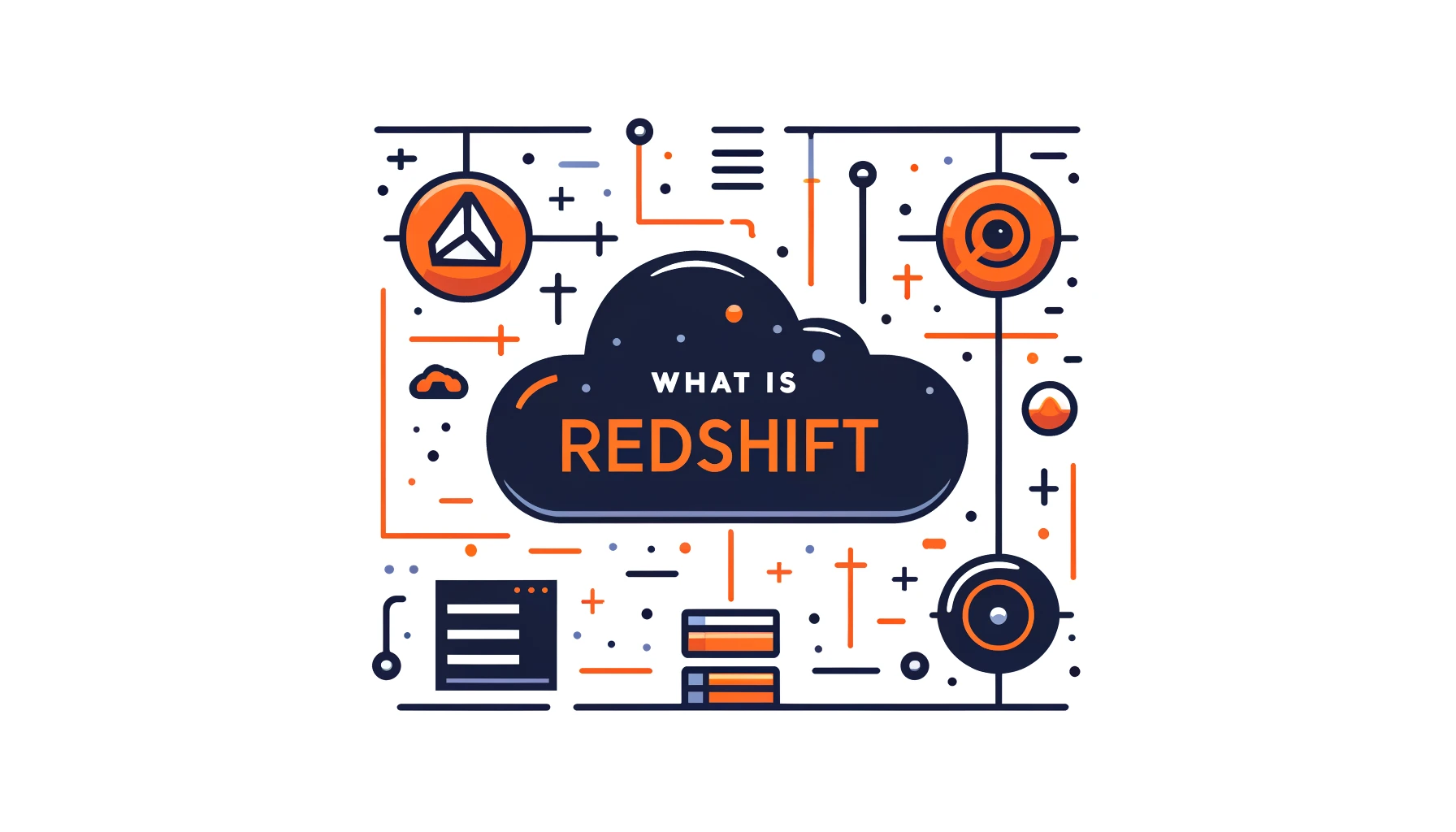
What is AWS Redshift

In today’s data-driven world, organizations need powerful tools to store, manage, and analyze massive amounts of data. Amazon Web Services (AWS) provides many cloud-based solutions, with one of the most popular being AWS Redshift.
This article will explore the features of AWS data warehouse. It compares it to other data storage platforms, and discusses its main functionalities. We will also discuss the main functionalities of AWS Redshift. We’ll also delve into the Role-Based Access Control (RBAC) feature and other security aspects of AWS Redshift.
What is AWS Redshift?
AWS Redshift is a fully managed, petabyte-scale data warehouse service provided by Amazon Web Services. It is made to store and analyze a lot of data, helping businesses learn important things from their data. AWS Redshift lets you store and search through large amounts of structured and semi-structured data using standard SQL. You can also use your current Business Intelligence (BI) tools with AWS Redshift.
Main Functionalities
- Scalability: AWS Redshift allows you to scale your data warehouse up or down based on your needs. You can start with a single node and scale up to a cluster of multiple nodes as your data grows.
- Performance: Redshift utilizes a columnar storage approach and parallel processing to deliver fast query performance. It can efficiently process complex queries on large datasets, making it ideal for data analytics and reporting.
- Integration: AWS Redshift works well with Amazon S3, AWS Glue, and Amazon QuickSight for storage, integration, and visualization.
- Cost-effectiveness: With AWS Redshift, you pay only for the resources you use. It provides a cheaper option for storing and analyzing big data compared to traditional in-house data warehouses.
Comparison to Other Data Storage Platforms
Let’s compare AWS Redshift with two other popular data storage platforms:
AWS Redshift vs. Amazon RDS
Amazon RDS provides a fully managed relational database service designed for online transaction processing workloads. This is a good option for apps that need lots of reading and writing, like online stores or customer management systems. RDS makes it simple for developers to set up their databases without having to worry about the underlying infrastructure. It supports popular database engines such as MySQL, PostgreSQL, Oracle, and SQL Server.
Redshift is a managed data warehouse service designed for online analytical processing and data warehousing. This tool handles complex queries and analyzes large amounts of data quickly. It is ideal for businesses that need to process and analyze extensive data. Redshift uses columnar storage and parallel processing to deliver fast query performance, even when dealing with petabytes of data.
In summary, Amazon RDS is best for OLTP workloads that involve a lot of reading and writing. On the other hand, Redshift is better suited for OLAP workloads. That involve complex queries and analyzing large volumes of data. To achieve optimal performance and efficiency, businesses should choose a service that best fits their specific needs.
AWS Redshift vs. Hadoop
Hadoop is an open-source framework for distributed storage and processing of big data. Hadoop offers flexibility and scalability. Redshift provides a more structured and SQL-based approach to data warehousing.
RBAC and Security in AWS Redshift
Role-Based Access Control (RBAC) is a critical security feature in AWS Redshift. RBAC allows you to manage user roles and permissions. This ensures that users can only access the data and resources they need. Here’s an example of creating a user and granting specific permissions using SQL:
CREATE USER analyst PASSWORD 'StrongPassword'; GRANT SELECT ON sales_data TO analyst;
In this example, we create a user named “analyst” and grant them SELECT permission on the “sales_data” table.
AWS Redshift also provides other security features, such as:
- Encryption of data at rest and in transit
- Network isolation using Amazon Virtual Private Cloud (VPC)
- Audit logging to track user activities and changes
Example: Querying Data
Let’s look at an example of querying data in AWS Redshift using SQL. Suppose we have a table called “sales” with columns “product_id”, “quantity”, and “price”. To calculate the total revenue for each product, we can use the following SQL query:
SELECT product_id, SUM(quantity * price) AS total_revenue FROM sales GROUP BY product_id;
This query groups the sales data by product_id and calculates the total revenue for each product using the SUM aggregate function.
Summary and Conclusion
AWS Redshift is a powerful and scalable data warehousing solution provided by Amazon Web Services. It offers key functionalities such as scalability, performance, integration, and cost-effectiveness. AWS Redshift is a popular choice for businesses seeking to analyze large-scale data storage and gain valuable insights.
This article talks about AWS Redshift, its main features, and how it compares to other data storage platforms. We talked about how RBAC and security features are important in AWS Redshift. We also showed an example of how to query data using SQL.
DataSunrise is a company that offers exceptional and flexible tools for securing your data in AWS Redshift. We provide solutions for security, audit rules, masking, and compliance. Our solutions can help you ensure the highest level of data protection and meet regulatory requirements. Come see a demo of DataSunrise’s tools to learn how they can help your organization.
